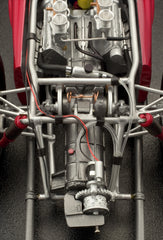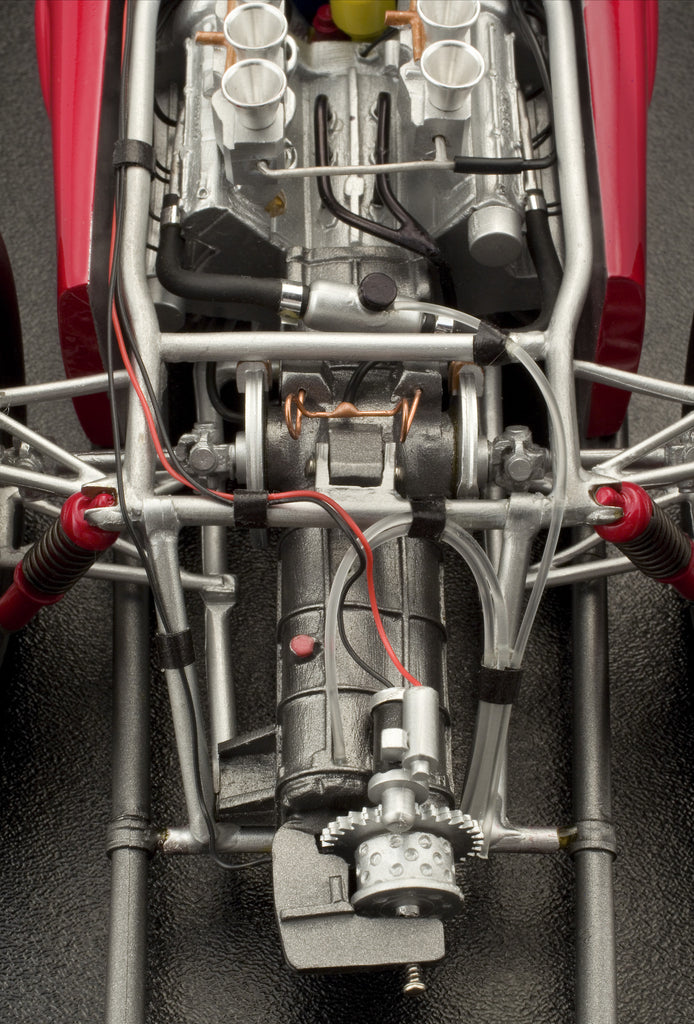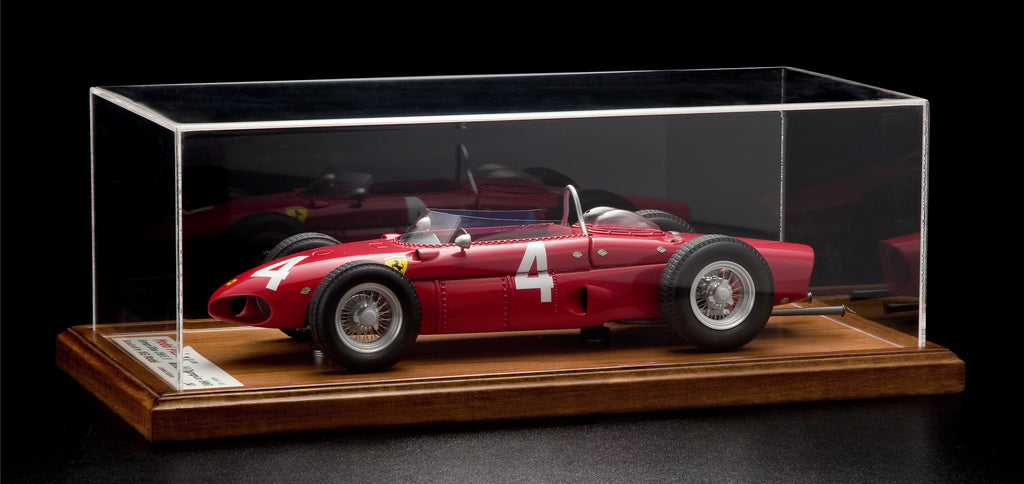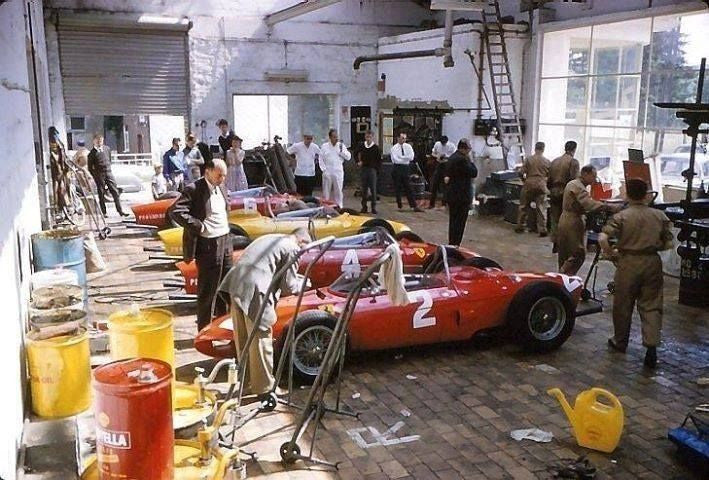Ferrari 156 F1, 1961 Phil Hill Model Plus 1:12 Scale
$1,600.00
Shark! It's the one word you don't want to hear at the beach, and it was the one thing a Formula One driver in 1961 didn't want to see steaming up behind him in his rear view mirrors.
The FIA introduced regulations that year which reduced engine displacement from 2.5 to 1.5 litres, and the Ferrari factory responded with a six cylinder Dino-engined racer sporting a distinctive 'twin-nostril' shark nose designed by famed engineer Carlo Chiti.
Playing catch-up to other F1 constructors, the Ferrari 156 was the first of their racers to utilize a rear engine layout, and the last to incorporate a fully tubular chassis. The 156 was tremendously competitive right out of the box, ultimately winning five of the eight Grands Prix for 1961, handing the constructor's championship to Ferrari, and the world championship to American driver Phil Hill. The car's ascendancy was not without tragedy however. At the Italian Grand Prix at Monza, Ferrari team driver Wolfgang von Trips accidentally clipped Jim Clark's Lotus, sending the Ferrari hurtling up an embankment, killing the driver and fourteen spectators. Phil Hill wound up winning the championship by one point over his deceased teammate.
As the racing season played out, internal strife within the Ferrari hierarchy resulted in a mass exodus on the part of the management and engineering staff, leaving the company's future in doubt. It was perhaps Enzo Ferrari's bitterness about the mutiny that led to all of the 156's being scrapped at season's end. Modified, and far less beautiful versions of the racer soldiered on into 1962-64, but met with little success. Today, a small number of high quality reproductions of the 156 exist, reminding race fans of one of the most glorious open-wheeled Ferraris to ever grace a track.
A most fitting memorial to these phenomenal cars and the titans who drive them is a handbuilt limited edition scale model. Aeromobilia is very fortunate to have a lovely, 1:12 scale, fully detailed example, factory built by Model Plus in Italy, one of an edition of only fifty pieces worldwide, and long out of production. The race number and bodywork details indicate that this is a representation of Phil Hill's Grand Prix of Germany entrant, which finished third behind Stirling Moss and Wolfgang von Trips.
Removing the model's nose section reveals nicely rendered suspension arms, coil over shocks, coolant lines with rubber flex joints, brake and clutch reservoirs, battery, a drilled pedal group, the steering box, and instrument panel wiring.
The cockpit features a faux-felt racing seat, simulated three piece wooden steering wheel, gated shift lever, and nicely detailed instruments and warning lights with simulated glass lenses. Just behind the rollbar, clear perspex bubbles cover the engine's inlet trumpets, and also form scoops to direct air to the inboard disc brakes. The 120 degree V6 Dino powerplant is nestled into the chassis ahead of the five speed transaxle, and a plethora of detail invites close examination. Electrical wiring snakes around the tubular frame, and catch tanks, coolant hoses and fuel and brake lines are shown in abundance.
The model is affixed to a perspex-covered wooden base, which includes an informational plaque, indicating that this is example #2 in the total edition of 50 pieces.
Reward yourself, or your favorite Tifoso with this rare and unique tribute to an immortal Ferrari racer!


























